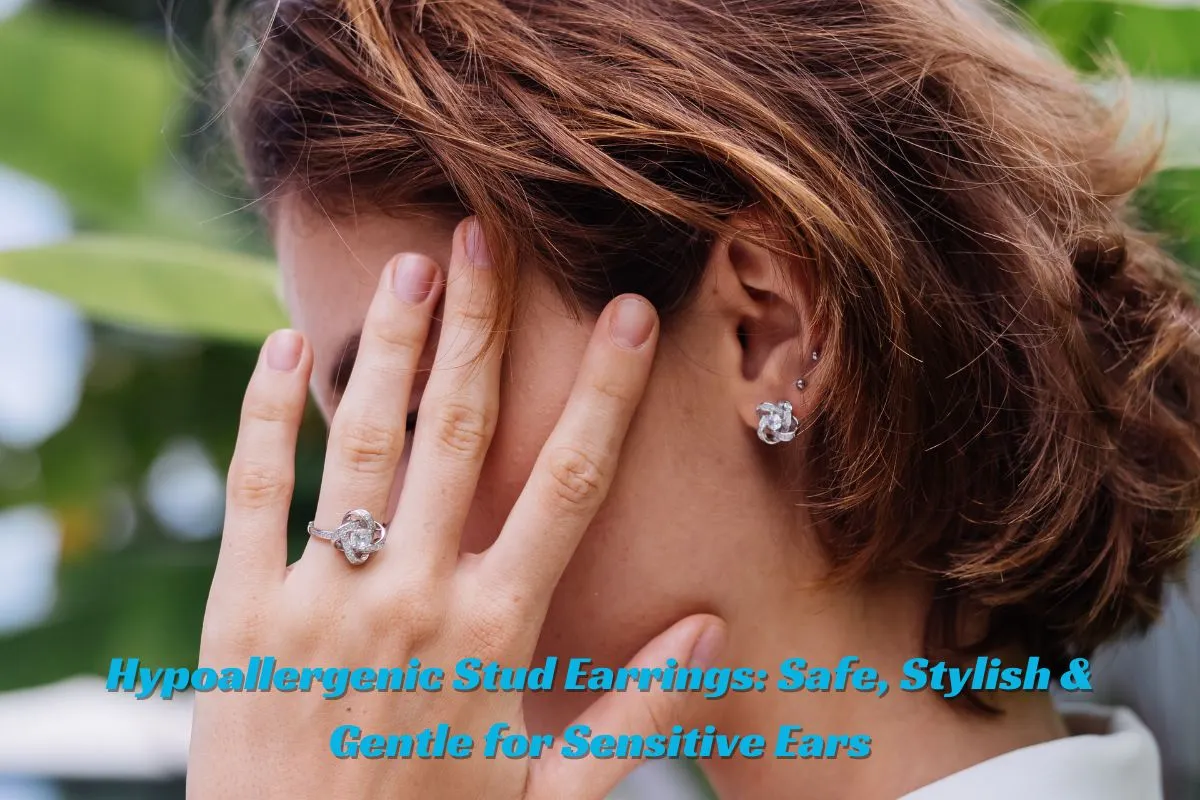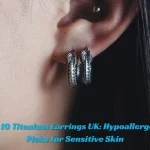Wearing earrings should never come at the cost of comfort, safety, or confidence. Yet, for many people with sensitive skin or metal allergies, traditional stud earrings can be an ongoing source of irritation, redness, or even painful infections. Whether you’re shopping for yourself, your child, or someone with newly pierced ears, choosing hypoallergenic stud earrings can make a world of difference. In this guide, we’ll explore what makes earrings truly hypoallergenic, the safest materials available, and how to shop smart in the UK for earrings that are as kind as they are chic.
What Are Hypoallergenic Stud Earrings?
Hypoallergenic earrings are designed to minimize the risk of allergic reactions, particularly in people with sensitivities to certain metals like nickel. The term “hypoallergenic” means “less likely to cause an allergy,” not entirely allergy-proof. However, when made with the right materials and constructed carefully, hypoallergenic earrings can be a game-changer for people with metal sensitivities or new piercings.
According to Dr. Susan Taylor, a dermatologist specializing in contact dermatitis, “For newly pierced ears, or for anyone with sensitive skin, implant-grade titanium is the gold standard. It’s inert, meaning it won’t react with the body, and it’s incredibly lightweight.”
Best Materials for Hypoallergenic Stud Earrings
1. Implant-Grade Titanium
Implant-grade titanium (such as ASTM F136 or F67) is biocompatible and non-reactive. It’s the same material used in medical implants, making it ideal for initial piercings or anyone with recurring irritation. This metal is also lightweight and corrosion-resistant, making it suitable for long-term, everyday wear.
Benefits:
- 100% nickel-free
- Safe for new piercings
- Lightweight and strong
2. Surgical Stainless Steel (316L or 316LVM)
Dr. Robert Finley, a metallurgist specializing in medical-grade alloys, explains, “Surgical stainless steel is another excellent option for hypoallergenic earrings, but it’s crucial to ensure it’s a high grade (316L or 316LVM) to minimize the risk of nickel release.”
Lower grades may contain trace amounts of nickel that can leach over time, especially with frequent wear.
Benefits:
- Durable and scratch-resistant
- Affordable and widely available
3. Niobium
Niobium is gaining popularity as a hypoallergenic material. It shares many qualities with titanium but can be anodized for colorful designs without compromising safety.
Piercer Mark Thompson explains, “Niobium is similar to titanium in its inertness and biocompatibility, and it can be anodized to create a range of vibrant colors without any risk of allergic reaction.”
Benefits:
- Great for kids and artistic styles
- Safe and durable
4. Solid 14k or 18k Gold
Emily Chen, a fine jewelry designer and gemologist, recommends, “Solid 14k or 18k gold (yellow, white, or rose) is generally safe, but be wary of gold-plated earrings, as the plating can wear away and expose the base metal, which may contain nickel.”
If you’re going for gold, ensure it’s not gold-filled, gold-plated, or vermeil unless you know the base metal is hypoallergenic.
Benefits:
- Timeless and elegant
- Long-lasting with proper care
Why Design Matters: More Than Just Metal
Beyond materials, the design of stud earrings significantly affects comfort and skin compatibility. Dr. Anita Patel, a UK-based dermatologist, shares, “The design of the stud is also important. Opt for studs with smooth, rounded posts and backs to minimize friction and irritation, especially for sensitive lobes.”
Flat-back earrings, also called labret-style studs, are especially helpful. Their flush backing avoids poking into the skin and eliminates snags from clothes or hair.
Design Tips:
- Choose rounded or flat backs over butterfly clutches
- Avoid sharp or textured posts
- Look for internally threaded or threadless designs
How to Shop for Hypoallergenic Stud Earrings in the UK
Sarah Miller, a jewelry retailer specializing in hypoallergenic options, advises, “When choosing hypoallergenic earrings, always look for clear labeling and certifications from reputable sources. Avoid vague terms like ‘nickel-free’ and prioritize specific material designations like ‘implant-grade titanium’ or ‘solid 14k gold.’”
What to Look For:
- Material tags: “Implant-grade titanium”, “316L surgical steel”
- Certifications: Look for products vetted by the APP (Association of Professional Piercers)
- Reputable UK stores: Astrid & Miyu, Sacred Gold, Solace Jewellery
Avoid:
- Unlabeled metals
- Plated costume jewelry
- Listings with vague claims like “nickel-safe”
Real Stories: Why Hypoallergenic Studs Matter
1. Piercing Studio Best Practices
Studios like Astrid & Miyu and Cold Steel in London exclusively use flat-back labret studs made of implant-grade titanium for new piercings. Why? Because they’ve observed faster healing and fewer allergic reactions in thousands of clients.
2. Personal Experience: A Lifestyle Upgrade
One UK-based fashion blogger, Emma R., shared, “Switching to titanium flat-back studs changed everything. I can sleep on my side again, wear headphones, and my ears don’t throb by evening.”
3. Parental Peace of Mind
Parents often choose hypoallergenic studs for their children’s first earrings. With titanium or surgical steel, the risk of infection or discomfort is dramatically reduced.
What the Science Says: Studies on Safety and Allergies
Nickel Allergy in Jewelry
Nickel is a leading cause of allergic contact dermatitis. Studies show that prolonged exposure, especially from poorly coated jewelry, leads to sensitization and discomfort.
Key Study: “Ear-piercing complications in children and adolescents” (PMC9470180) highlights how butterfly backings and non-biocompatible metals can lead to embedded earrings, infections, and inflammation.
Biocompatibility of Metals
Medical journals confirm that implant-grade titanium and niobium are among the safest materials for long-term skin contact, reducing complications dramatically.
Source: Safe Piercing Guide (www.safepiercing.org)
FAQs: Hypoallergenic Stud Earrings
Q1: Are hypoallergenic earrings 100% allergy-proof?
A: Not always, but high-quality materials like titanium, niobium, or solid gold greatly minimize the risk.
Q2: Can I wear them to sleep or shower?
A: Yes, flat-back designs made of safe materials are perfect for continuous wear.
Q3: Are gold-plated earrings okay for sensitive ears?
A: Avoid them unless the base metal is safe. The plating may wear off over time.
Q4: How do I know I’m allergic to nickel?
A: Symptoms include itching, redness, or rash after wearing earrings. A dermatologist can run a patch test.
Q5: Are these earrings suitable for kids?
A: Yes! Hypoallergenic studs are excellent for children’s sensitive skin and active lifestyles.
Final Thoughts: Comfort Is Confidence
Finding the right hypoallergenic stud earrings isn’t just about avoiding allergic reactions—it’s about embracing comfort, safety, and style in one effortless accessory. Whether you’re new to piercings, managing a metal allergy, or simply value well-made jewelry, hypoallergenic options in the UK market are now more accessible and fashionable than ever.
So, the next time you’re browsing for earrings, remember: your skin deserves kindness. Choose hypoallergenic stud earrings that work with your body, not against it—and let your confidence shine, one safe sparkle at a time.




